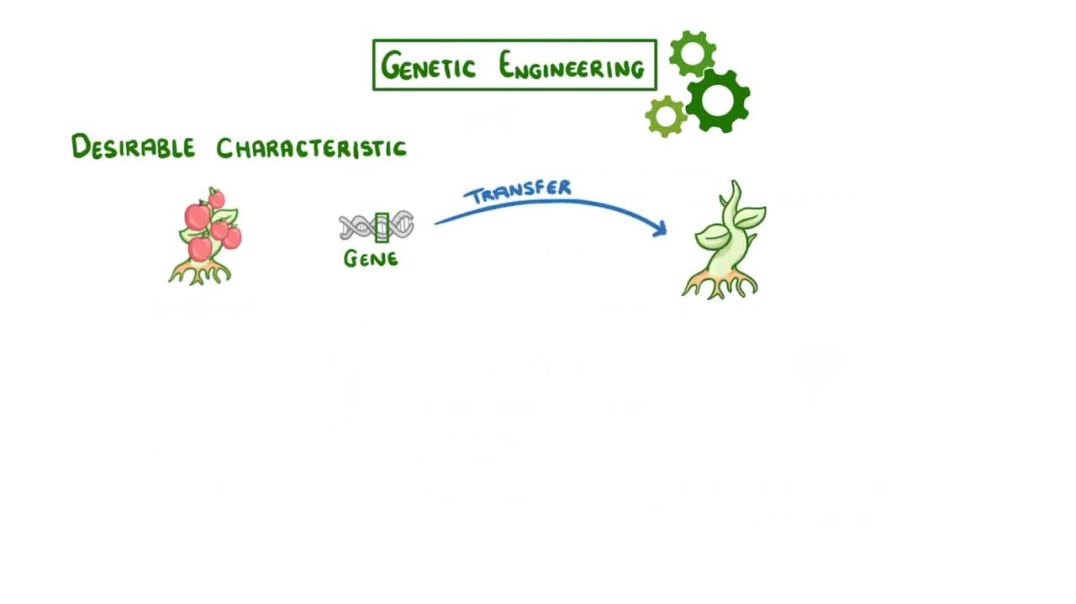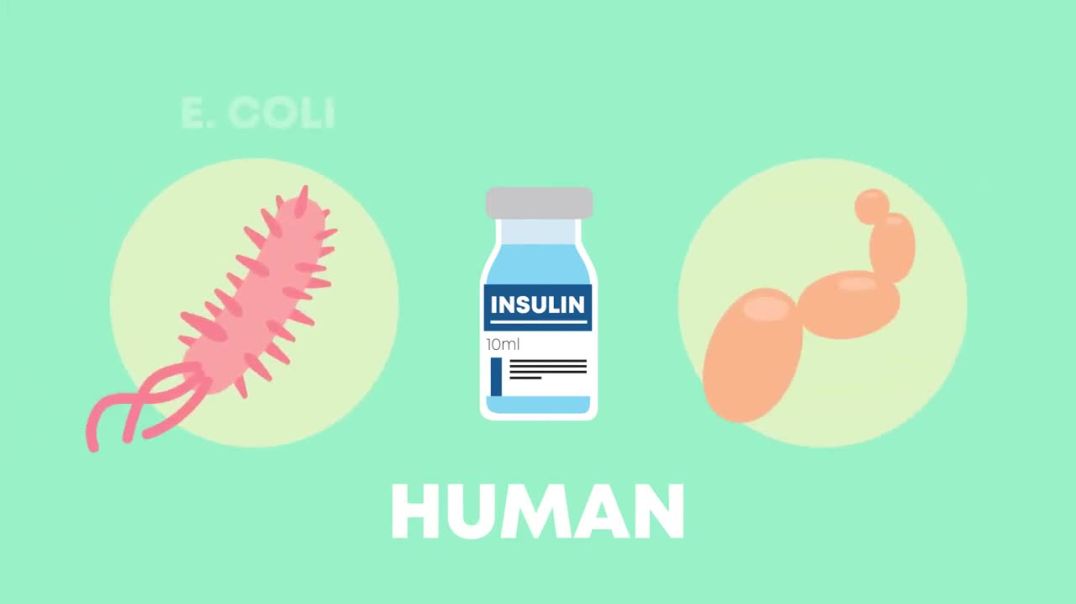Senior Secondary / High School
Sub Category
*Lyrics In description* Phish's song Golgi Apparatus
I look into the finance box
Just to check my status
I look into the microscope
See Golgi Apparatus
Golgi, oh, woe is me
You can't even see the sea
Golgi, olgi, oh ooo olgi
Golgi
Golgi
They call him Lysosome
Cause he runs so fast
Runs like a junkyard dog
With a brain of br****
I saw you
With a ticket stub in your hand
Under the light
Middle of the night
Couldn't get it wrong
So I had to
Copyright Disclaimer Under Section 107 of the Copyright Act 1976, allowance is made for "fair use" for purposes such as criticism, comment, news reporting, teaching, scholarship, and research. Fair use is a use permitted by copyright statute that might otherwise be infringing. Non-profit, educational or personal use tips the balance in favor of fair use.
Biology music video project I made 3 years ago, freshman year...
edited/directed: Chloe Hoffman
song written by: Chloe Hoffman/Bailee Webb
Recorded by: Josh Whitton
A rap about cells' organelles, featuring UCSF neuroscientist Sama Ahmed and a delicious model. This music video accompanies Science With Tom #2 - Cell Structure & Function - premiering Wed October 7th.
Instructions on how to write and submit your “Verse Two” - http://bit.ly/1IMUCYI
Annotate the lyrics via rap genius: http://genius.com/Science-with....-tom-what-is-the-gol
Vocals by Jay Jammin Ngaluola
Audio produced by @ChaseMooreMusic
Video produced by 3Motion Creative
Subscribe to Science With Tom - http://bit.ly/1Hf68JW
Website (book ****emblies, workshops, & live shows): www.sciencewithtom.com
Facebook - https://www.facebook.com/ScienceWithTom
Twitter - https://twitter.com/ScienceWithTom
Instagram - https://instagram.com/sciencewithtom/
There are two types of Respiration: Aerobic Respiration — Takes place in the presence of oxygen. Anaerobic Respiration –Takes place in the absence of oxygen.
Mutation and variation are two simultaneous events involved in the process of evolution. The main difference between mutation and variation is that mutation is an alteration in the nucleotide sequence of a gene whereas variation is any difference between individuals of a particular species.
Mutations and sexual reproduction increase genetic variation in a population. Natural selection occurs when environmental pressures favor certain traits that are p****ed on to offspring. The “big prize” in natural selection is p****ing on genetic information. Natural selection acts on populations.
A genetic mutation is a change to a gene's DNA sequence to produce something different. It creates a permanent change to that gene's DNA sequence. Genetic variations are important for humans to evolve, which is the process of change over generations. A sporadic genetic mutation occurs in one person.
Genetic engineering, also called genetic modification or genetic manipulation, is the modification and manipulation of an organism's genes using technology.
Genetic engineering (also called genetic modification) is a process that uses laboratory-based technologies to alter the DNA makeup of an organism. This may involve changing a single base pair (A-T or C-G), deleting a region of DNA or adding a new segment of DNA.
A genetically modified organism (GMO) is an animal, plant, or microbe whose DNA has been altered using genetic engineering techniques. For thousands of years, humans have used breeding methods to modify organisms. Corn, cattle, and even dogs have been selectively bred over generations to have certain desired traits.
Every person has a blood type, (O, A, B, or AB) and an Rh factor, either positive or negative. The blood type and the Rh factor simply mean that a person's blood has certain specific characteristics. The blood type is found as proteins on red blood cells and in body fluids. The Rh factor is a protein that is found on the covering of the red blood cells. If the Rh factor protein is present on the cells, the person is Rh-positive. If there is no Rh factor protein, the person is Rh- negative.
The following are the possible combinations of blood types with the Rh factors:
Rh Positive Blood Types:
A+, B+, 0+ and AB+
Rh Negative Blood Types:
A-, B-, 0- and AB-
Rh factors are genetically determined. A baby may have the blood type and Rh factor of either parent, or a combination of both parents. Rh factors follow a common pattern of genetic inheritance. The Rh-positive gene is dominant (stronger) and even when paired with an Rh-negative gene, the positive gene takes over.
If a person has the genes + +, the Rh factor in the blood will be positive.
If a person has the genes + -, the Rh factor will also be positive.
If a person has the genes - -, the Rh factor will be negative.
This animation outlines the process of osmoregulation as covered in Unit 2.6 of the WJEC GCSE Biology curriculum - Role of Kidney in homeostasis.
This animation was created by Access Pharmacy through the Science of Medicines at Cardiff University.
What is homeostasis and how homeostasis enables a living organism to live and thrive?
-------------------------------------------------------
Support our channel and also get access to awesome perks:
https://www.youtube.com/channe....l/UCbaZa-dV7h9QOLzrz
Help us making Education Universal: https://www.Launchgood.com/educationforeverychild
Support us on Patreon: https://www.patreon.com/freeanimatedEducation
🚨 OTHER LINKS:
Follow our Social Media:
YouTube: https://www.youtube.com/c/FreeAnimatedEducation
Facebook: https://www.facebook.com/freeAnimatedEducation
🚨 HASHTAGS:
#FreeAnimatedEducation #Homeostasis
What is Homeostasis? | Physiology | Biology | FuseSchool
Homeostasis is a term first defined by Claude Bernard in 1865. It means maintaining a constant internal environment.
Senses all around the body are measuring various things and sending the information back to the brain. The brain then does its best to keep all these things stable and constant to keep the body working properly. Homeostasis is maintaining a constant internal environment.
What kind of things need to be kept constant in the body? It's very important to keep our temperature the same, at around thirty seven degrees Celsius. You can find out more about this in the video on temperature regulation. You also need to keep the levels of sugar in the blood constant along with levels of ions and water. Your blood pressure needs to be carefully monitored along with the amount of waste in the blood such as carbon dioxide and urea.
Let's say one of these factors goes too high or low, what is the brain going to do to get it back to normal levels? The answer to that is negative feedback. Negative feedback is the process whether the brain uses either a hormone or the nervous system to send a signal to the part of the body that can rectify the problem. For example, after you eat a meal with your blood sugar level increases. This is detected, and the pancreas will release a hormone called insulin that causes the sugar to be stored in the liver. The blood sugar level will then return to normal.
Negative feedback is the leap from which the body takes a stimulus, reacts by responding accordingly and brings the body back to the normal levels.
So why is homeostasis so important? Our metabolism, which is all the chemical reactions in our bodies that keep us alive, is controlled by enzymes. These enzymes only work in very specific conditions. If these conditions change, they could stop working and we could die.
Luckily, all of this happens without you having to think about it. If you had to do it yourself, you would have to spend all day and night just trying to keep all these things constant and we'd have no time to doing fun like watch videos of cats on the Internet.
SUPPORT US ON PATREON
https://www.patreon.com/fuseschool
SUBSCRIBE to the FuseSchool YouTube channel for many more educational videos. Our teachers and animators come together to make fun & easy-to-understand videos in Chemistry, Biology, Physics, Maths & ICT.
VISIT us at [a]www.fuseschool.org%2C[/a] where all of our videos are carefully organised into topics and specific orders, and to see what else we have on offer. Comment, like and share with other learners. You can both ask and answer questions, and teachers will get back to you.
These videos can be used in a flipped cl****room model or as a revision aid.
Find all of our Chemistry videos here: https://www.youtube.com/playli....st?list=PLW0gavSzhMl
Find all of our Biology videos here: https://www.youtube.com/playli....st?list=PLW0gavSzhMl
Find all of our Physics videos here: https://www.youtube.com/playli....st?list=PLW0gavSzhMl
Find all of our Maths videos here: https://www.youtube.com/playli....st?list=PLW0gavSzhMl
Instagram: https://www.instagram.com/fuseschool/
Facebook: https://www.facebook.com/fuseschool/
Twitter: https://twitter.com/fuseSchool
Access a deeper Learning Experience in the FuseSchool platform and app: www.fuseschool.org
Follow us: http://www.youtube.com/fuseschool
Befriend us: http://www.facebook.com/fuseschool
This is an Open Educational Resource. If you would like to use the video, please contact us: info@fuseschool.org
Excretory system
The excretory system removes waste and toxins from the human body.
Your skin eliminates waste by sweating.
Your lungs eliminate carbon dioxide.
Your kidneys filter over 180 liters of blood in order to produce urine.
The kidneys filter waste like urea. This liquid that is collected is called urine.
Your kidneys are made up of millions of filtering units called nephrons.
Watch More Videos @ http://bit.ly/extracl****app, http://extracl****.com/
This video will help you to learn What is the structure and function of the skin? with Example.
What is the structure and function of the skin?
Have you ever wondered what is our body’s largest organ?
Could it be heart? What about your lungs ? or your brain?
No, they are not nearly the body’s largest organ?
You can see your body’s largest organ right now?
What are we talking about?
The skin of course!!
The skin is the largest organ of the body, accounting for about 15% of the total adult body weight.
It performs many vital functions, including protection against external physical, chemical, and biological ****ailants, as well as prevention of excess water loss from the body and a role in thermoregulation.
The skin is continuous, with the mucous membranes lining the body’s surface.
The integumentary system is formed by the skin and its derivative structures.
The skin has basically three layers - Epidermis, dermis and hypodermis.
The epidermis is the outermost layer of skin which provides a waterproof barrier and creates our skin tone.
The epidermis consists of a specific group of cells known as keratinocytes which function to synthesize, keratin which is a long thread-like protein with a protective role.
The dermis is beneath the epidermis and it contains tough connective tissue, hair follicles, and sweat glands.
The dermis is fundamentally made up of the fibrillar a structural protein is known as collagen.
The dermis lies on subcutaneous tissue or panniculus, which contain small lobe of fat cells known as lipocyte.
The deeper subcutaneous tissue or hypodermis is made of fat and connective tissue.
The color of the skin is created by special cells called melanocytes, which produce the pigment melanin.
Melanocytes are located in the epidermis.
Thanks for watching this video.
Download Extracl****.com app: - Play Store: http://bit.ly/extracl****app
Follow us on our social media handles to stay updated.
Website – https://www.extracl****.com/
Facebook - https://www.facebook.com/extracl****official
Instagram - https://www.instagram.com/extracl****official
Youtube - https://www.youtube.com/extracl****
Twitter - https://twitter.com/extracl****_com
Happy Learning!!
“Thanks for watching”.
#Extracl****
#skin
#biology
#zoology
#cl****11
#cbse
#cl****12
Skin as Excretory Organ 3D model - In English
About us: We are a social enterprise working on a mission to make school learning interesting, relevant and affordable to every child on this planet.
You can watch our FREE online videos at http://www.bodhaguru.com/watch and download our practice application/games - just visit http://www.bodhaguru.com/play
If you like our videos, subscribe to our channel http://www.youtube.com/user/BodhaGuruLearning. Feel free to connect with us at http://www.facebook.com/BodhaGuru OR http://twitter.com/Bodhaguru
Have fun, while you learn. Thanks for watching
--
Team BodhaGuru
The immune system responds to antigens by producing cells that directly attack the pathogen, or by producing special proteins called antibodies. Antibodies attach to an antigen and attract cells that will engulf and destroy the pathogen. The main cells of the immune system are lymphocytes known as B cells and T cells.
A predator is an animal that hunts, kills and eats other animals for food. Prey are the animals that predators kill for food. In a food chain, if the population of prey increases, there will be more food available for the predator, which results in the population of the predator increasing.
The anatomical pathway of a reflex is called the reflex arc. It consists of an afferent (or sensory) nerve, usually one or more interneurons within the central nervous system, and an efferent (motor, secretory, or secreto-motor) nerve. Most reflexes have several synapses in the reflex arc.
















